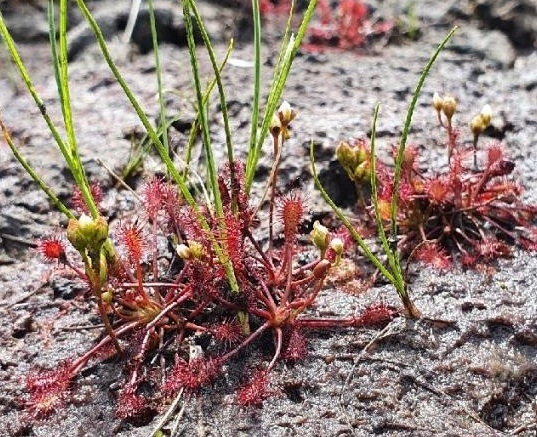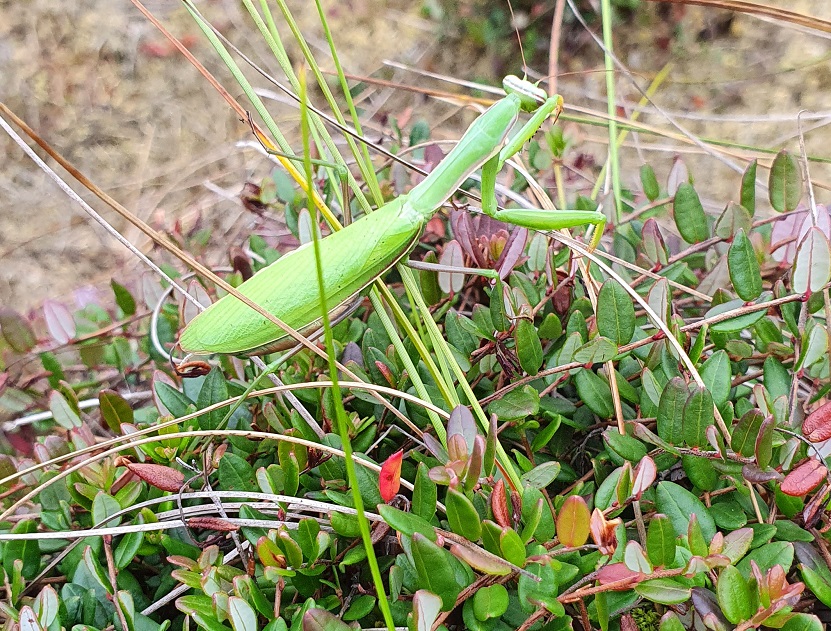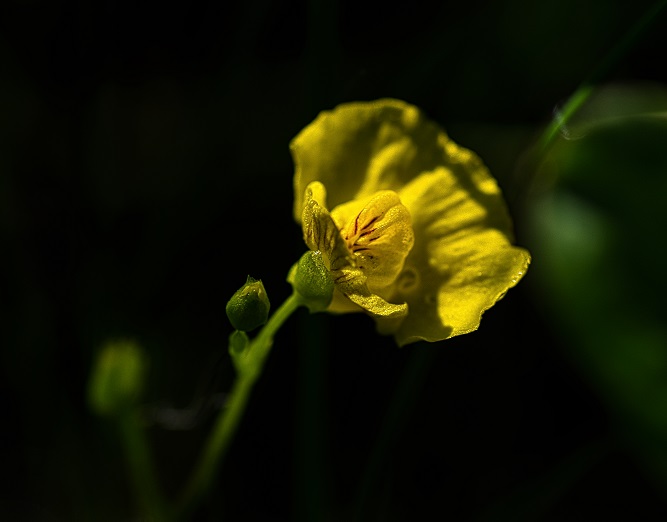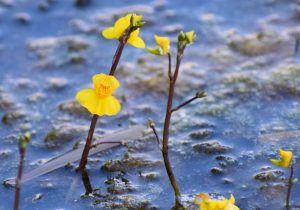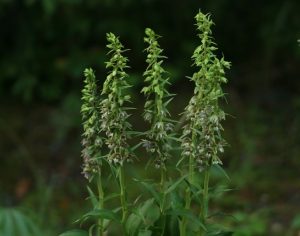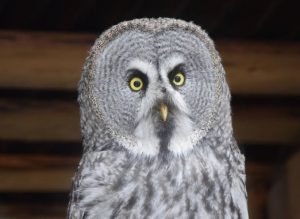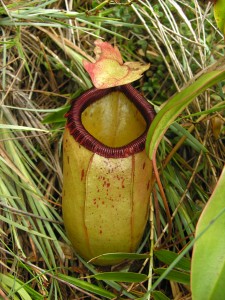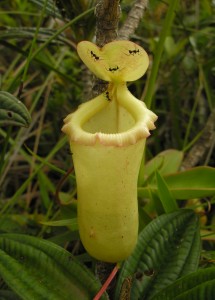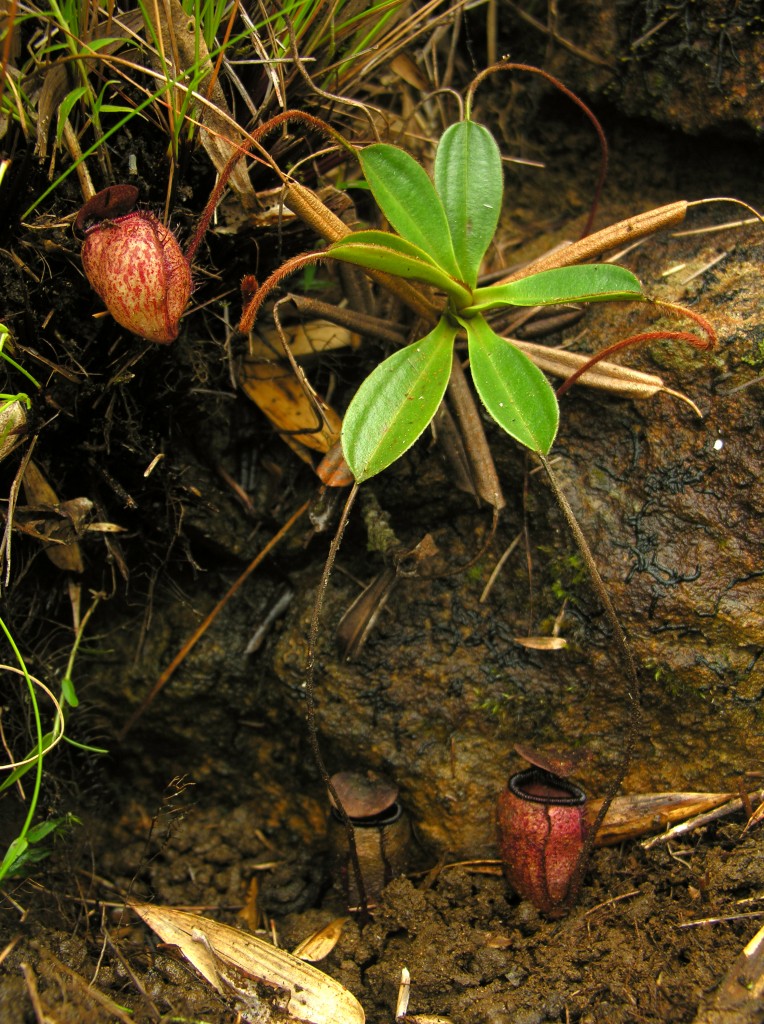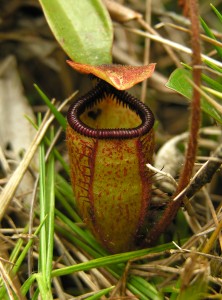Growing on Sibuyan Island at the heart of the Philippine archipelago, two of the most spectacular and interesting of all pitcher plants can be found – Nepenthes sibuyanensis and N. argentii. N. sibuyanensis is a large pitchered species that is closely related to the widely cultivated Nepenethes ventricosa whereas N. argentii is one of the smallest species of the entire genus. Formally described in 1998, Nepenthes sibuyanensis was named after the island where it endemically occurs and it represents one of the least documented and least studied of all species of pitcher plants.
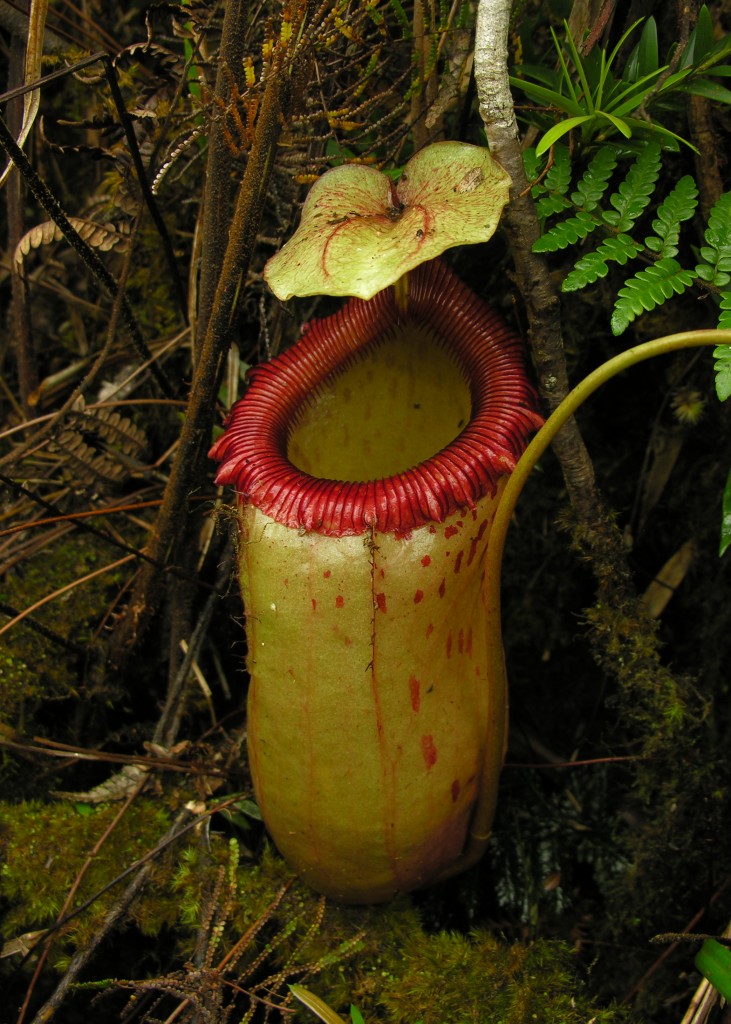
Nepenthes sibuyanensis growing on the summit of Mount Guiting-Guiting on Sibiuyan Island, Philippines
Nepenthes sibuyanensis has only been observed and studied a few times in its natural habitat owing to the remoteness and inaccessibility of mountains on which it grows. It is found only on the summits of Mount Guiting-Guiting and Mount Mayo on Sibuyan Island. Mount Mayo can be reached only by ascending a narrow and precipitous knife edge ridge which, in places, is just a few meters wide. On both sides of the ridge, there is a vertical drop of several hundred meters, so relatively few tourists and botanists have visited the habitat where this plant grows.
On Mount Mayo and Mount Guiting-Guiting, N. sibuyanensis can be found from 1,250 to 1,500 meters above sea level and at the upper most parts of its altitudinal range it grows together with the minute pitcher plant N. argentii. Interestingly hybrids which this tiny species have been recorded, however during my observations in the field, I did not observe any. N. sibuyanensis grows prolifically amongst low growing stunted vegetation that is up to 1 m or so tall. It grows terrestrially and forms a scrambling stem, but does not truly climb for its habitat is generally devoid of vegetation over 1 m high. N. sibuyanensis does compete efficiently with the dense, low growing flora of its habitat and grows within, through and on top of surrounding vegetation, in direct sunlight or slight shade.
The montane vegetation of the habitat of N. sibuyanensis consists primarily of short woody shrubs which produce small, tough, waxy leaves. This slow growing vegetation does not support many herbivorous insects, and consequently, the majority of the insect fauna of the upper flanks of Mt. Guiting-Guiting appear to be detritivores, and consume decaying, peaty leaf litter which slowly accumulates in this harsh environment. N. sibuyanensis appears to have adapted to the prey spectrum of its habitat and produces many lower pitchers however relatively few upper ones. The lower traps develop on unusually long tendrils (which can be up to one meter in length) which enable the pitchers to hang through the dense by low vegetation and rest directly on the ground. In this way, N. sibuanensis is able to prey specifically upon the various ground insects of its habitat and exploit the most abundant source of nutrients that is available within its habitat. Upper pitchers are produced, but mostly only where plants grow and climb among higher vegetation, N. sibuyanensis is able to flower and set seed whilst producing lower traps and does so especially in the most exposed and hostile areas of its habitat.
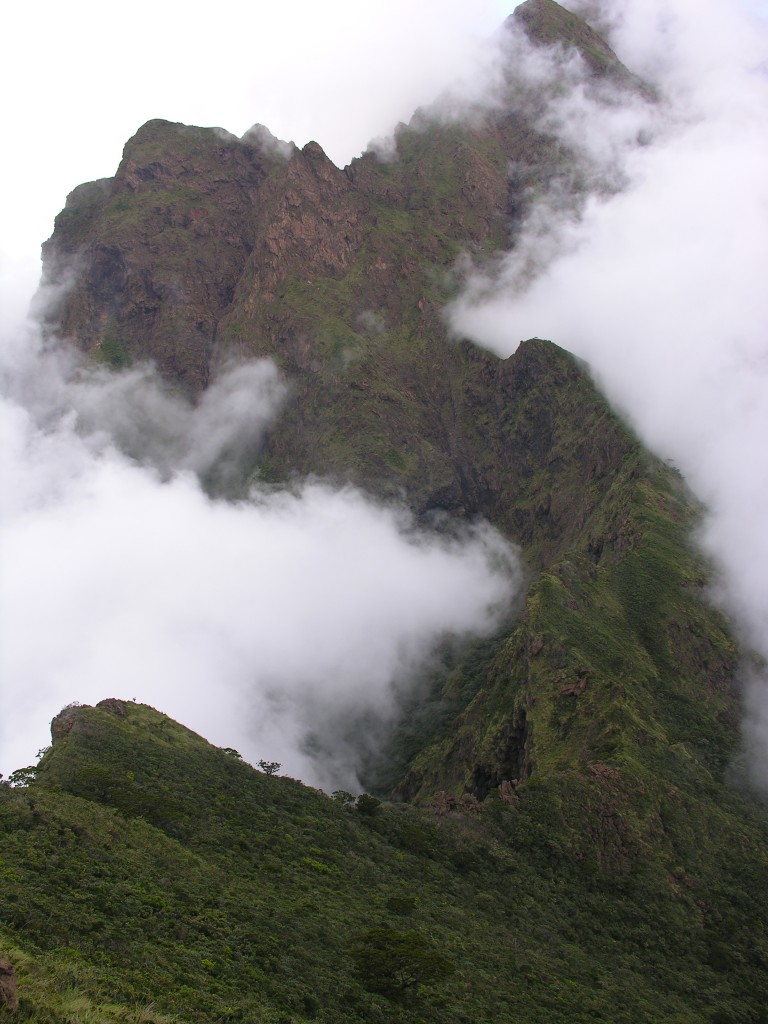
The knife edge ridge that leads to the habitat of Nepenthes sibuyanensis and N. argentii on Mount Mayo, Sibiuyan Island, Philippines
The largest specimens of N. sibuyanensis which I encountered in the wild grew as scrambling plants and produced stems up to 2.5 m in length and up to 3 cm in width. The leaf blade is up to 30 cm in length and up to 7 cm in width, typically yellowish green. The spectacular pitchers of this species are cylindrical in shape and up to 22 cm in height and up to 7 cm in width. In some specimens, the diameter of the pitcher is restricted very slightly at the mid section in a manner similar to N. burkeii and N ventricosa, causing the upper section of the leaf to appear very slightly infundibular and the lower section to be somewhat globose. The exterior and interior surface of the pitcher is yellowish orange and usually the outer surface is mottled by variable red, oblong-shaped blotches. The lid is consistently yellowish and blushed red to varying degrees while the peristome varies in colour from vivid to purple however usually the peristome ribs adopt a darker shade of red or purple than the rest of the peristome. In aged pitchers the colouration of the pitcher darkens before the trap withers and dies, shortly beforehand however, the entire trap may suffuse pure reddish orange and the peristome may turn black. On Mt. Guiting-Guiting, I also observed a small population of three spectacular plants which produced pure yellowish white pitchers – although the plants were not altogether devoid of red pigmentation as the aged foliage often suffused reddish prior to withering.
Growing slightly higher than N. sibuyanensis, N. argentii is to be found. Nepenthes argentii was formally described in 1997 and is distinctive in that it is one of the smallest of all pitcher plants. It was named in honour of George Argent who collected the first specimens of this species in 1989. Much like N. sibuyanensis, this species also occurs exclusively on Mount Guiting-Guiting and Mount Mayo although at higher altitudes, as it occurs between 1,400 to 1,900 meters above sea level.
The summit and upper slopes of Mt. Guiting-Guiting are savagely windswept and severely exposed to fluctuating temperature and intense precipitation. The flanks of the mountain are predominantly covered by stunted, woody shrubs less than 40 cm tall, which grow rooted in shallow, nutrient poor, stony substrate. Yet N. argentii has evolved to survive within this habitat through reducing in size which allows it to grow sheltered in the protection of surrounding vegetation and boulders.
The short, stout nature of its leaves allows it to mainly grow nestled amidst the compact, benefiting from the protection which the surrounding vegetation affords. In such habitat, N. argentii grows as a short stemmed, scrambler, and clambers through and on top of surrounding vegetation. The pitchers which it produces develop at the ends of long tendrils much like N. sibuyanensis and similarly hang through surrounding vegetation, resting on the surface of the ground while the leaves are exposed to the intense, high altitude sunlight with little or no shade. To grow above the level of the surrounding heathy montane vegetation would result in detrimental exposure to wind and precipitation, so consequently N. argentii does not form a true climbing stem and for the full duration of its life, grows as a scrambling terrestrial.
N. argentii has evolved to become one of the smallest species of Nepenthes and the foliage of mature specimens is usually no more than 25 cm in diameter. The leaf blade is up to 12 cm in length and the pitchers are diminutive being up to just 2.4 cm in length and width. All parts of the pitchers of N. argentii are consistently dull orangish red and are mottled with variable red and purple blotches, except for the peristome which is consistently dark purple or black.
The future outlook for both N sibuyanensis and N. argentii is optimistic since their habitat is accessible only by a precarious knife edge ridge which few tourists ascend. Only a small proportion of the total habitat of both plants is accessible along the summit trail and so regardless of future increases in the number of tourists that visit the mountain, the species is unlikely to disappear from the mountain altogether. Visitors to Mount Guiting-Guiting should be advised that since all populations of N. sibuyanensis and N. argentii lie within the boundaries of the Sibuyan Island National Park, the collection of plants from the wild is illegal and so far poaching has been minimal. With long sighted, responsible management, the spectacular habitats of these two very interesting pitcher plants can be protected for the future so these remarkable plants can exist for all to enjoy in the wild.
Nepenthes sibuyanensis and Nepenthes argentii plants can be purchased from the following sources:
Hampshire Carnivorous Plants Ya Mayla, Allington Lane, West End, Southampton, SO30 3HQ, United Kingdom Website: www.hantsflytrap.com P&J Carnivorous Plants The Hayden, Brampton Lane, Madley, Hereford, HR2 9LX, United Kingdom Website: www.pj-plants.co.ukStewart McPherson
